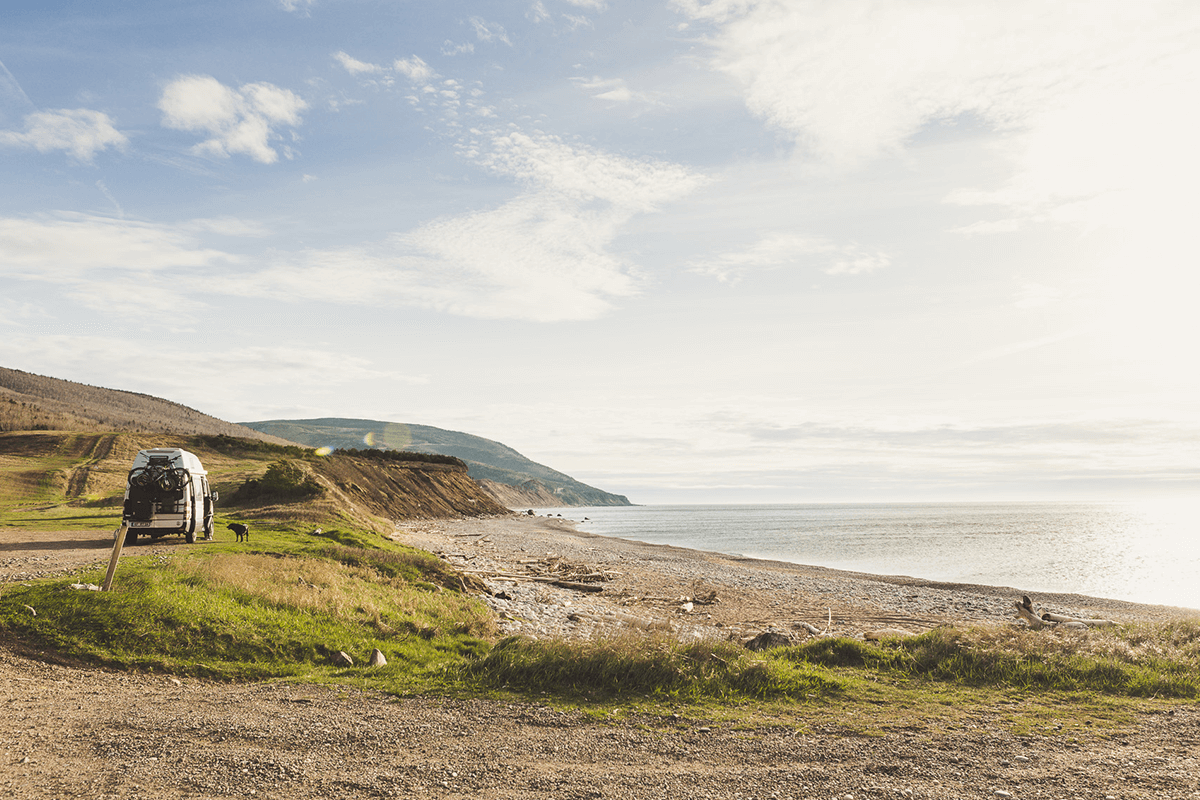“The Rock,” as the locals call Newfoundland, has long been a dream destination for both of us. Because the rough north always fascinates us and since our trip to Norway together we have only fallen even more under the spell of this incredibly beautiful and expansive nature. We found characters drawn by the sun and wind, beautiful, colorful wooden houses and the feeling of being at the end of the world attractive and fascinating. This is exactly what Newfoundland stands for, an island shaped by the Atlantic that has been mercilessly battered by northern weather. The island of Newfoundland is located in northeast Canada and can only be reached by ferry from Nova Scotia or Labrador. It is part of the province of Newfoundland and Labrador.

The ferry crossing from North Sydney in Nova Scotia to Port aux Basques took 6-7 hours and can be calm or stormy depending on the mood of the Atlantic. The vehicles traveling with us, all including trucks or pickups with quads or ATVs on the trailer, promised pure adventure. At the campgrounds at the latest, we understood what all the vehicles were needed for. It feels like the whole island moves mainly on quads or ATVs and in winter on skidoos. Given the poor road surfaces and the lack of asphalted roads into the vast hinterland, this is also a better choice. Pothole warning signs are more of a constant reminder than an actual warning, because potholes not only come after the warnings, but are omnipresent.
For the first night our route took us from the harbor to the beautiful beach of “Grand Bay West”, right next to Port aux Basques and we couldn’t have imagined a better reception from “The Rock”. We arrived when the sun was shining, the sandy beach was empty and the sun's rays were warm.
After the first few kilometers on the TCH (Trans Canada Highway) we got what we wanted, everything was bigger and further than we knew from home. Although Newfoundland is only a third the size of Germany and is tiny compared to the rest of North America. The road stretches for tens of kilometers straight through never-ending forests. From the road we saw countless lakes that were not even developed. Great hills rose up, yes hills, because nothing here is higher than 600m, while on the other side there was always a view over the ocean. We cruised at a relaxed 90 km/h, tried to avoid the biggest bumps and enjoyed the unknown World outside the window. The children were fascinated by all the trucks and pickups and had the perfect activity for the trip.

Shortly before our second stop at the campsite in Barachois Pond Provincial Park, he suddenly stood there: our first moose. He was happily grazing right next to the TCH and seemed almost curious when we stopped excitedly. The excitement among us and the children was of course great. We had wanted this moment for a long time, because we had never seen a moose in all our weeks in Scandinavia and now it stood in front of us, a young animal - which, upon closer inspection, reminded us of a mixture of a hare, kangaroo, horse and deer - and allowed himself to be examined and photographed with complete peace of mind. When we arrived at the campsite, the spirit of adventure took hold of us, more moose tracks were found, inspected and evaluated, a campfire had to be built, which helps against the annoying black flies, gives a nice atmosphere, warmth and of course also embers for potatoes and marshmallows. Whether it was really relaxed with two lively children remains to be seen...

The next morning we explored the very large campsite by bike and discovered that Canadian camping works very differently than our camping habits in Europe. If we interpret camping as being reduced to the bare essentials, being in nature with little equipment and superfluous things and enjoying the peace and quiet away from all the hustle and bustle, camping here is a kind of second home on the lake, fully serviced with its own bouncy castle and all kinds of bells and whistles. It's not quiet either, because the gasoline compressors roared in front of the huge trailers and caused the mobile 3-room apartments to storm. On our few visits to the campsite we prefer to stand in the area of the tents, but are very quiet without much comfort.
At lunchtime we left the still very pretty town and turned off the TCH onto the 480, the only road in Newfoundland that ran through the middle of the island (the main road goes around the edge). The reality of the chosen side road quickly caught up with us, it was a gravel road for a whopping 80 kilometers. That wouldn't actually be a problem if it weren't for the potholes and it took us a total of 7.5 hours to drive, which is not surprising at an average speed of just 18 km/h. We were still rewarded for the strenuous route. The landscape was breathtaking, we spotted seven moose, various pheasants and other birds and even three caribou. The relief of having asphalt under the tunnels again was huge, but we came to Canada precisely because of adventures like this.
We continued back to civilization and finally got to the TCH East near Badger. However, the highway didn't accompany us for long, so we followed the 341/0 towards Twillingate. The islands of “Notre Dam Bay” enchanted us, behind every curve and every hill there is a new, incredible view of a thousand small and large islets in the Norwegian Sea. Surrounded by stones and overgrown with narrow pine trees and completely uninhabited. We are on the way to Iceberg Alley, the current that the broken icebergs from the Arctic followed before the 10,000 year old ice dissolves into the sea forever and a large iceberg should be lying in front of Merritt Harbor. Driven by the spirit of discovery, we drove through a small village over a hill to the small fishing port and saw a small one lying in the sea. This sight really fascinated us and we were really excited. But a second look revealed the real highlight: an iceberg the size of five single-family homes. It lay like a huge ship at the end of the small harbor and shone in the most beautiful light blue-mint tones. Euphoric and graceful at the same time, we stood in front of the colossus with our mouths open for almost three hours.

Still excited by this experience, we drove to the village of Twillingate, a nice harbor town with old colorful wooden houses, small museums and artist galleries. We stayed right at the pier and explored the area the next day, with a beautiful lighthouse and various hiking trails on the surrounding cliffs. We were particularly impressed by French Beach and Spillar's Cove. We kept spotting our iceberg from the day before from afar.
We continued towards Gander and then onto the TCH to the “Terra Nova National Park”. The first stop for us in every national park is usually at the visitor center, because the park and its history and special features are often lovingly explained here and, especially for the little ones, lovingly and with lots of toys. You will also receive an overview map of the park with hiking trails and campsites, as you are only allowed to spend the night in designated places in the national park. The Visitor Center of the Terra Nova National Park delighted our little ones with an exhibition about the animals that live in the park and a large-scale documentation about the starry sky and light pollution. In a touch tank with sea water you could feel the seabed, what an anemone or a starfish feels like, how crabs actually pinch and what all that seaweed is all about.
Afterwards we went to a larger campground with a washing machine for the two of us. Once a week we use such stops to do a big clean and the children clearly enjoy the extended time in a fixed place. As soon as we arrived, the camping blanket with all sorts of toys was lying in front of the van. The picnic table, which can be found at every pitch like a grill or fire bowl, is stocked with children's bottles and snacks in our lunch boxes and there was plenty of play. Meanwhile, Franzi went on a mission to do laundry, for the first time in three weeks.
Some of the hiking trails through the parks usually start at the campsites. So we were able to immerse ourselves in the wild nature of the national park with the dog on the morning tour, while saving the longer tour for the rest of the day. After two wonderfully relaxing days, the Terra Nova National Park released us and we drove straight to the capital of Newfoundland: St. John's.

St. John's is not only the largest city in Newfoundland, it is also located in the very east of the island and for many years was only accessible by train, boat or plane. We love exploring a new city and so we did and so we had to set off on the evening of arrival in the pouring rain, which wasn't necessarily pleasant with two children and a dog and what felt like a temperature of one degree. Nevertheless, we were curious and in retrospect we didn't want to miss it because the atmosphere was exciting and we were able to get a good overview. The next day, not only had the rain clouds moved on, it was literally summer in the city and we discovered a wonderfully lively, colorful and really magical big/small town, because half of all Newfoundlanders live in St. John. We explored Water Street, the many small side streets and dark alleys and staircases from the times of the raiding seafarers, explored some of the province's history at “The Rooms” museum and enjoyed the sunset on Signal Hill. Shortly after dusk there was another surprise: very trusting foxes come here from the surrounding cliffs because they know about the rubbish of the tourists who arrive here every day. A spectacle for young and old.
Just half an hour from St. John there is a protected nature reserve for seabirds in Witless Bay and exploration boats leave from Bay Bulls, and various tour operators also set off from neighboring communities. But if you follow the streets of the Avalon Penisula, you will always find great vantage points from which you can observe various birds. But we were looking for a very special species and had been since our trip to Norway: puffins. The cute little birds, which with their colorful beaks don't fit in at all in the cold north, nest here in Witless Bay, but since neither the weather nor the visibility was good, we decided to go straight to another colony on the Bonavista Drive to the peninsula.
Bonavista is known for its beautiful old fishing villages, but it is also located on Iceberg Alley, where the great white giants also swim past. Our mission was clear, we wanted to go to Ellison, because there is a colony of puffins breeding right off the coast and, unlike Witless Bay, you can watch the cute birds on foot. The colorful hustle and bustle on the rock in front is like a major event, so many birds in such a small area are fighting over the best nesting places, coming from eating or fighting over the most beautiful lady.

Unfortunately, the weather didn't match the name of the peninsula and barely allowed a view of the coast. So after a short stop at the “Ryan Premises National Historic Site”, which clearly shows the development of the fishery, we decided to go straight to the Gros Morne National Park.

Gros Morne is a national park that combines several different vegetation zones. There are fjord-like lakes that cut deep into the mountains, extensive tundra stretching across the caribou and lush forests filled with mosses and ferns, steep and flat coasts with miles of sand and stone beaches and of course the Tabellands, a massive high plateau made of rock Earth's interior and looks like a piece of Mars, hostile to life and bronze-red. We decided to spend two nights at the Berry Hill Campground, which has a wonderfully short hiking trail around Berry Hill Pond that is easy to do even with children. A longer hiking trail to waterfalls and a short climb up Berry Hill could also be easily accessed directly from the campground. There are fantastic little cabins with a lake view to rent here, for anyone who doesn't want to travel with a camper or wants more than the comfort of a tent.
To Western Brook Bay, one of the park's flagships, there is a well-developed but short path to the boat launch, from where boat tours into the fjord start. The path is perfect for strollers, wheelchairs or bikes. Our route took us from the northernmost point of the park, Shallow Bay, back and to the south side of the park to Woody Point. The small fishing village has adapted to the tourists of the national park and so, in addition to shops for everyday needs, there were also cute cafés and artist shops. The water taxi to Norris Point also leaves here to connect the two sides of the national park. Just above Woody Point is the park's Discovery Center, which is highly recommended because it clearly explains how our planet is structured and the continental plates move, which ultimately led to the creation of the park, especially the tablelands. You could marvel at different types of rock and discover fossils. The center was supplemented by an exhibition about the First Nations who lived in the park area.

Now, after 18 days in Newfoundland, we say goodbye to this breathtaking island, the Nordic fauna and flora, the people shaped by the winds and the coasts crashed by the waves. Newfoundland was definitely a very special highlight right at the beginning of our North American adventure. For anyone who would like to experience this wild nature, we recommend either coming from the mainland with a camper or flying directly to St. John and exploring the island in a rental car. It's best to spend the night in the cabins of the national park campsites, small cottages or in a tent, as many of the great campsites are designed only for camping and can only be reached on foot.
Off to the Newfoundland adventure.





